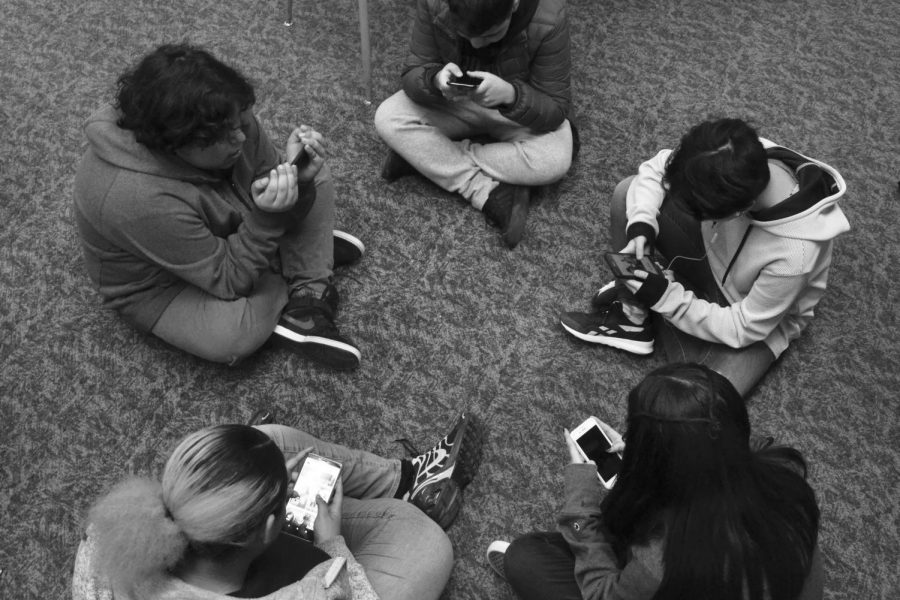Phone addiction among teens real, on the rise
A new epidemic has been spreading to teens all around the world, and it’s worse than the bubonic plague. It is phone addiction, and it has been rotting the minds of our youth. Now, although that is an obvious exaggeration, it is not too far from what some people believe today.
Contrary to what many may think, The U.S. National Library of Medicine says that smartphones do not meet the criteria to be considered an addiction. An addiction is defined as when a habit turns into an obligation. There are parallels between addiction and high phone usage (which is where the confusion can come from,) but by definition, smartphone addiction does not exist. This does not mean, however, that you shouldn’t be worried about the possible harm smartphones can cause.
A 2018 Nielsen study reported that more than a third of U.S. adults spent four to six hours a day on digital media. This kind of extended exposure can cause dry eyes, blurred vision, neck pain and headaches.
Smartphones have also been linked to at least 1.6 million car accidents every year, according to The National Highway Traffic Safety Administration. That is 14% of distracted driving deaths.
Columbia Heights High School students agree that while their phone use is a large part of their daily life, they would not go as far as to call it “an addiction.”
“I wouldn’t consider myself to be addicted to my phone,” Henry Mai (11). “But I do find myself checking social media daily.”
Mai’s average time spent on his phone daily according to the Screen Time app is just two hours, which is relatively low compared to other students our age.
“I don’t think I’m addicted yet, but I feel like I’m going down that path right now,” Junnior Lucero (11) said. “My average screen time is a little under eight hours, which is kind of worrying.”
Harvard studies say the reason for the increase in phone usage in recent years is due to the social environment they provide. There are over two billion connections available on our phones, meaning lonely people can find companionship. This is not necessarily a bad thing, because with these connections, it is easier to feel you belong in the world.
Teachers in Heights are also noticing the increase in phone usage with their students.
“Times have changed a lot, and people feel if you don’t have your phone, you miss out on things,” social studies teacher Mrs. Edwardson-Stern said. “I believe most students are responsible with their phone, but it can distract students from focusing on their work.”
As a student with a smartphone in Columbia Heights High School, I do not see phones as a serious issue currently, but I do believe we are headed in the wrong direction. Students are using their phones more and it can lead to negative effects. To halt the amount of smartphone usage increasing, teens should have the risks told to them as well as be encouraged to be more social in the real world, not just via the tiny computer in their pocket.

Fuad Hassan is in 12th grade and he is Sports Editor for the Heights Herald. He is on the track team and is a member of knowledge bowl. Fuad enjoys...

Renee DeMars Dehn is currently a senior at Columbia Heights High School and the Co-Editor-in-Chief of The Heights Herald. This is their third year on the...







